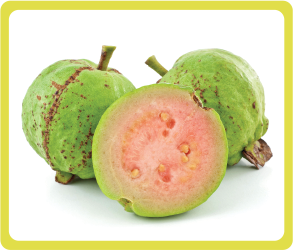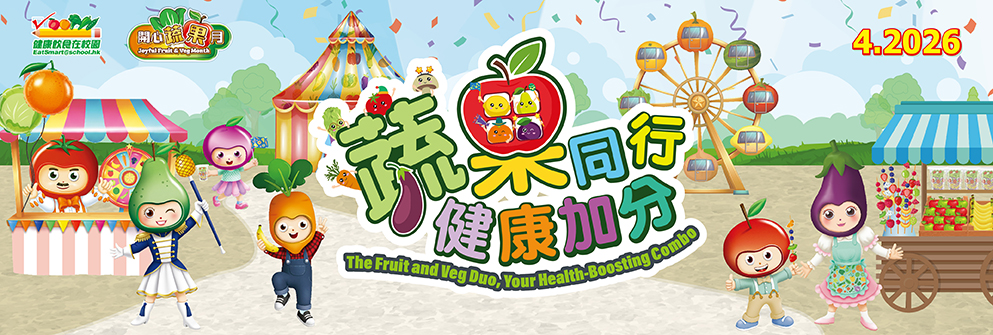Guava
|

Major Growing Areas
Guavas are native to Mexico, Peru, Thailand and Indonesia. They are subsequently cultivated in places such as mainland China.
Varieties
Guavas are mainly divided into two types: the white-fleshed ones (the commonest type) and the red-fleshed ones. They come in a lot of varieties. The common ones are Jong Shan Yueh Pa (with ellipse-shaped fruit, greenish yellow rind, as well as crunchy, sweet and white pulp under the rind), Li Tzu Pa (with long-shaped fruit, small fruit core, and extra thick and extremely crunchy pulp), Yilan white guavas (with fruit resembling to the shape of Li Tzu Pa, rind in light green with a tint of white, and crunchy, refreshing pulp in pure white colour), Thai guavas (native to Thailand, with ultra large-sized fruit that is round- or ellipse-shaped, greenish-yellow rind, and crunchy pulp that has a lower sugar content), pearl guavas (with pear-shaped fruit and crunchy pulp that has a moderately sweet taste), and crystal guavas (with thick, crunchy pulp and less seeds).
Nutritional Values
Guavas are called the "King of Vitamin C". The vitamin C content of two small-sized guavas is approximately two times and three times of that of two small-sized kiwi fruits and one medium-sized orange respectively. Guavas are also rich in potassium and β-carotene.
|
|
Per 100 g (Approx. 2 small-sized guavas) |
| Energy |
68 kcal |
| Sugar |
8.9 g |
| Dietary Fibre |
5.4 g |
| β-carotene |
374 μg |
| Vitamin C |
228.0 mg |
| Potassium |
417 mg |
Buying Tips
Guavas are prone to pest attack. Avoid buying those with a blackened stem. Choose those that have glossy, smooth and greenish-yellow rind and a plump appearance.
Interesting Titbits
Guavas contain pectin, so they are suitable for processing into jam and jelly.
One Serving of Fruit is Approximately Equivalent to:
2 small-sized guavas
|
|
|
|
|

